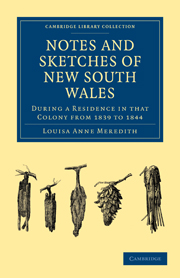Summary
Emus and native turkeys are not now seen near Bathurst, although still very numerous in the less populous districts. The bush-turkey is about the same size as a tame one; the colour dark brown, with light grey feathers on the breast, and full plumage on the head and neck. They are very shy, and, being excellent eating, are much sought after by both Europeans and natives. On foot it is all but impossible to approach within gunshot of them, as they take wing on the least alarm; but they will allow persons on horseback, or in a vehicle of any kind, to come close to them, and by such means they are usually taken.
A most extraordinary account is given by Mr. Gould and other naturalists of the manner in which these birds provide for the artificial hatching of their young, by scratching together a great heap of vegetable matter, in which the females lay their eggs, and leave them, trusting to the heat which the mass acquires during fermentation, to bring out the brood. This, if true of any Australian bird, is certainly a mistake as regards the turkey, which frequents the wide, open plains of the interior, and forms scarcely any nest, but in some accidental hollow lays several bluish-spotted eggs, which afterwards become much darker in colour, and are hatched in the usual manner.
- Type
- Chapter
- Information
- Notes and Sketches of New South WalesDuring a Residence in that Colony from 1839 to 1844, pp. 114 - 123Publisher: Cambridge University PressPrint publication year: 2010First published in: 1844

